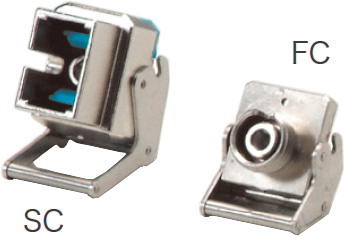宽范围波长光谱分析仪 AQ6374E 350 - 1750 nm
世界一流的光学性能
- 动态范围: 60dB (peak ±1.0 nm)
- 超宽可测功率范围: +20 ~ -80dBm
- 快速测量: 0.5 sec. (100 nm span)
- 波长范围: 350 - 1750 nm
- 波长分辨率: 0.05 nm (全波长范围)
- 波长精度: ±0.05 nm (633/1523 nm), ±0.2 nm (350 - 1750 nm)
- 动态范围: 60 dB (λPK ±1 nm)
- 功率灵敏度: -80 dBm (900 - 1600 nm), -70 dBm (400 - 900 nm)
波长分辨率设置
8种波长分辨率设置(0.05 ~ 10nm)可以让用户根据被测器件/系统选择最佳值。
可测功率范围
超宽可测功率范围(-80 ~ +20dBm)适合测量不同应用领域使用的高功率源和低功率信号源。
波长精度
通过内置或外部参考光源可以进行波长校准,可以保持 ±0.05nm 的波长精度。。
快速测量
OSA 只需 0.5 秒即可完成 100 nm 的跨度(灵敏度设置为 NORM_AUTO)。
200,001 采样点数
一次扫描可测量大量样品,以高分辨率测量更宽的波长范围。
大LCD触摸屏
高分辨率、响应灵敏的10.4英寸多点触控电容触摸屏,使设备操作更简单、更直观。可以像操作平板设备一样改变测量条件、执行分析,以及更改光谱视图。在光谱视图中,通过简单的点击和拖动,可以缩放或移动波形视图。。

曲线运算和分析
7条独立曲线
- 同时显示多条曲线;
- 曲线间运算(两条曲线相减);
- 最大值/最小值保持功能。
USB端口
仪器前后共有4个USB端口,便于连接鼠标、键盘、外置硬盘和U盘等外接设备。

缩略图文件预览
缩略图便于在内外部存储器的大量文件中轻松、快速找出特定的文件。

一次性保存曲线
此功能允许用户一次性将7条曲线保存到一个文件。文件保存为CSV格式,用PC应用软件可以轻松操作这些文件。
多达16个指定数据分析功能
提供多种数据分析功能,涵盖多种流行的应用:
|
|
7条独立曲线
- 同时显示多条曲线;
- 曲线间运算 (两条曲线相减);
- 最大值/最小值保持功能
气体净化功能

AQ6374E拥有高分辨率和高灵敏度,因此可以用它们检测空气中是否存在水分子。在近红外光谱区域检测出的水汽可以重叠或掩盖实际被测设备的光谱特性。
AQ6374E的单色镜配置了用于空气净化的闭环回路,通过后面板的端口不断输送纯净的 净化气体如氮气(甚至是干燥空气),这些光谱分析仪就可以测量不受水汽吸收影响的光谱。
平滑功能
可降低被测光谱的噪声。
环境温度变化、振动和冲击会对光谱分析仪(OSA)的测量精度产生影响。
内置截止滤波器
由于使用了衍射技术,单色镜在某些情况下会产生高阶衍射光,其波长等于输入波长的整数倍。
内置校准源
环境温度变化、振动和冲击将影响光谱分析仪等光学精密产品的测量精度。为了让YOKOGAWA OSA必须能够提供精确的测量,仪器都配有校准专用光源。 校准过程是完全自动的,只需两分钟即可完成。它包括:
- 光轴对准调节功能: 可以自动对准单色镜的光路,以确保功率精度。
- 波长校准功能: 通过参考源可以自动校准光谱分析仪,以确保波长精度。

高级标记功能
为了获得功率密度和指定频谱的积分功率值,可以在标记点添加高级标记。通过这项功能,无论信号是否被调制过,都可以简单地从信号光谱中得到OSNR值。
建立自动化测试系统
由于内置了宏编程功能,AQ6370系列中的机型都可以执行自动测量并通过它们的远程接口控制外部设备。
通过GP-IB、RS-232*2和以太网端口,可以在PC上使用标准SCPI兼容命令或专用AQ6317兼容命令来对仪器进行远程控制。另有LabVIEW®驱动程序可供使用。
OSA Viewer
实时远程控制
OSA Viewer是一个软件包,不但可以用它将仪器屏幕上显示的内容复制到PC上,还可以在PC上执行以下操作:
- 远程控制和操作
- 显示、分析并传输仪器采集到的数据
OSA Viewer可以帮助以下人员:
- 生产经理: 可以远程操作仪器并在办公室内收集测量结果,无需赶到实际生产线上。
- 服务工程师: 可以帮助客户或同事预先设置仪器,或者调整要测试的器件和系统。

超连续谱光源的特性分析
超连续光是通过高度激励光子晶体光纤等特殊材料的非线性光学效应,经由锁模脉冲激光器(通常是飞秒掺钛蓝宝石激光器)泵浦后产生的。正所谓“宽阔如灯、亮如激光”,超连续光不但符合白炽灯和荧光灯光谱的超宽特性,还符合激光器的高空间相干性和超亮特性,从而使其能够与光纤实现完美耦合,同时也具有出色的单模光束品质。
AQ6370系列凭其优越性能,可以成为超连续谱光源生产及生产后质量检查过程中测试与展现产品特性的优秀仪器。

超连续光谱光源的测量实例(AQ6374E+AQ6375E)
可见LED测试
可以测量和分析用于照明、指示、感测以及其它应用的可见LED的光谱。AQ6373E和AQ6374E支持大芯径光纤的输入,可以有效获得LED光并对其光谱执行测量。内置色彩分析功能将自动对主波长和光源的色度坐标及色温做出评价。

AQ6374E颜色分析示例
无源器件测试
结合ASE、SLD或SC等光源,OSA可以轻松评估WDM滤波器、FBG、ROADM和WSS等无源器件。AQ6370系列出色的光学性能可以实现更高分辨率和更大动态范围的测量。通过内置光滤波分析功能,可以同时报告波峰/波谷波长、功率、串扰和纹波宽度。

光纤的波长损耗特性分析
光纤中的信号损耗取决于光信号传播的波长。其中的差异是由光纤吸收和瑞利散射效应造成的。材料和光纤类型会影响损耗值:对于石英单模光纤,1.55μm附近的光波损耗大约是0.2dB/km;对于1.4μm附近的光波,由于水离子(OH)作用,损耗会变大。此类光纤的波长损耗特性分析需要测量较宽范围的波长。
通过与白光源相结合,AQ6374E可有效测量较宽范围的波长相关损耗。

使用AQ6374E进行波长相关损耗特性分析的测量示例。
光纤布拉格光栅的特性
光纤布拉格光栅(FBG)是一种分布有布拉格反射镜的一小段光纤,它可以将特定波长的入射光反射回去,只传播剩余波长的光。这是通过纤芯折射率发生周期性变化来实现的,即在纤芯形成一个特定波长的介质镜。因此,光纤布拉格栅格可以用作内嵌光学滤波器,用来阻挡特定波长的光,或用作波长反射镜。光纤布拉格栅格的应用主要在光通信系统:可专门作为陷波滤波器使用,并且也可与光环形器或光分插复用器(OADM)一起被用于光多路复用器和多路解复用器。此外,2-3μm波长区域的光纤布拉格光栅还可以作为直接传感元件使用,用于地震仪器中的应变和温度传感以及恶劣环境下的压力传感。要描述FBG的特性,AQ6370系列的高波长分辨率和宽测量范围是必不可少的条件。

气体探测与浓度测量
与超连续(SC)或超辐射发光二极管(SLD)等宽带光源一同使用时,AQ6370系列可以显示被测气体混合物的光吸收图谱。

氰化氢 H13C14N 的吸收光谱测量(AQ6375E)
AQ9447 Connector Adapter
- AQ9447 Connector Adapters
- For optical input port
- AQ6370 Series Optical Spectrum Analyzer Accessories
NA Conversion Adapter
The 735385 NA Conversion Adapter is the accessory for the AQ6370 series/AQ6361/AQ6360 optical spectrum analyzer.
NA conversion adapters can be connected to GI50 or GI62.5 optical fibers with relatively large NA to improve the stability of light level measurements.
This application note introduces free space light measurement jigs for measuring the emission spectrum of a light source that propagates in free space or the optical transmission spectrum of an optical filter. It describes four types of jigs for light sources and one type for filters.
To accurately measure pulsed light using an optical spectrum analyzer (OSA), it is necessary to understand the characteristics of the OSA and select the appropriate measurement method and settings.
Overview of optical communications via optical fibers including: signal conversion, optical fiber benefits, techniques like wavelength division multiplexing (WDM) for increased capacity, key components like optical amplifiers and spectrum analyzers for maintaining transmission quality.
Optimizing bias voltage is essential for efficient optical modulator operation, maintenance of signal quality, and meeting performance specifications required for a designated application. Proper biasing helps achieve desired modulation effects, reduces distortion, and enhances overall reliability of optical communication systems.
宣传手册
- AQ6370 Series Optical Spectrum Analyzer (3.9 MB)
- Optical Spectrum Analyzer Selection Guide (1.1 MB)
- 光产品选型指南 (4.3 MB)
- 光谱分析仪AQ6370系列产品简介 (4.7 MB)
操作手册
- AQ6374E Optical Spectrum Analyzer User's Manual (15.7 MB)
- AQ6374E Optical Spectrum Analyzer Getting Start Guide (3.9 MB)
- AQ6374E Optical Spectrum Analyzer Remote Control User's Manual (2.8 MB)
软件
- AQ6370 OSA Viewer
- LabVIEW Drivers for AQ6370 series Optical Spectrum Analyzer ( NATIONAL INSTRUMENTS Web Page )
- MATLAB Toolkit for AQ6370 series Optical Spectrum Analyzer
- Sample Program for OSA
- APP for Optical Spectrum Analyzer
- Logging Data Utility
固件
图纸
- AQ6374E Optical Spectrum Analyzer (423.8 KB)
操作培训
产品展示

获得更多专业服务


























